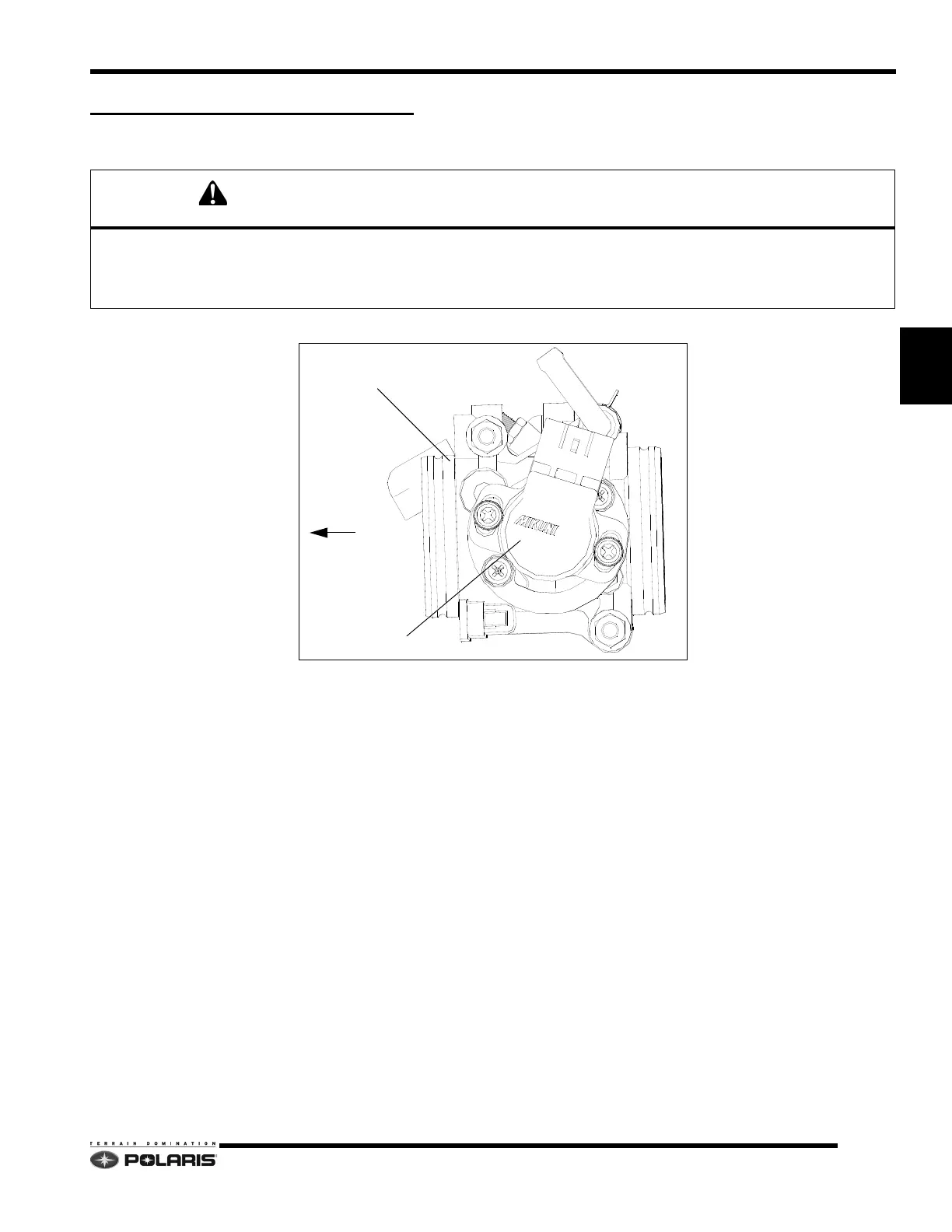4.45
Cleanfire Fuel Injection
4
THROTTLE POSITION SENSOR
Throttle Position Sensor (TPS) Overview
The Throttle Position Sensor (TPS) is a 5 VDC potentiometer (variable resistance) type sensor mounted to the PTO side
of the throttle body. The internal components of the sensor are connected to the throttle shaft. The TPS output signal
changes as the throttle plates are opened and closed by the operator. The ECU uses this signal to determine the position
of the throttle plates.
The TPS is set at the factory based on a throttle body idle air gap flow specification. Adjustments should only be
p
erformed when:
• TPS is replaced
• TPS or throttle body is mis-adjusted
• Troubleshooting erratic or inconsistent e
ngine idle, and/or engine performance
NOTE: Follow these guidelines whe
never working with the TPS:
• Use Digital Wrench® when checking the TPS volt
age. Do not use any other diagnostic tool.
• Disconnect throttle cable from the throttle lever. If the TPS
idle voltage changes, the throttle cable is too tight.
Readjust throttle cable.
• Verify the throttle cable is not pulling on the throttle
plate cam. Turn the throttle cable in line adjuster clockwise to
loosen the cable. If the cable continues to pull on the throttle plate cam, readjust the throttle cable threaded
barrel on the throttle body.
• All engine management sensors/switches
must be connected to obtain accurate TPS voltage readings.
• Use a fully charged 12VDC battery to power the
engine management system
The throttle position sensor (TPS) is set at the time of throttle body manufacture. TPS adjustments should only be
made if the TPS was loosened, repositioned, or replaced.
Any adjustments made to the idle air gap screw, TPS sensor, or throttle synchronization screw should only be
performed when directed to so by the Digital Wrench® Diagnostic Software.

